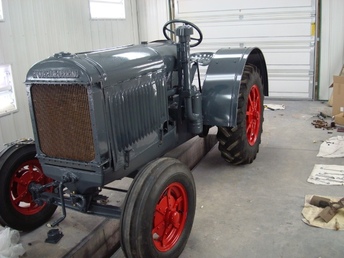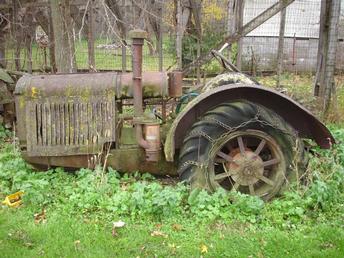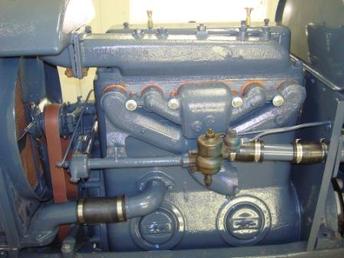As far as I know, the "gas manifold" that comes through the hood was never an original option. I would bet that it is the same manifold that you could buy for an F-30. I have several old catalogs from aftermarket suppliers, and some of them offered the "gas manifold." This means that the manifold is "cold," in other words, it doesn't do much heating of the intake manifold, as the kerosene-distillate manifolds did. Some of the IH tractors that were originally made for kerosene-distillate had a baffle that could be moved with a lever, to supply heat for kerosene, or remove most of it for using gasoline. I don't believe such a baffle was part of the 10-20 manifold, but I can't prove it. Perhaps somebody who deals with these a lot can tell us. I used several K-D tractors on gasoline, and they all had the baffle in "cold" position. I don't know if there would be a real advantage to buying a cold manifold, IF the cold/hot position is available on an original manifold. If you are not going to be doing any hard work, it really shouldn't matter. You can burn gas with no hassles. My guess is that you would not get full power from gasoline when using a "hot" manifold, just because it causes too much vaporization of the gas.
I grew up on a couple of 10-20s, a '26 and a '29. It's been almost 60 years since I've fired one of 'em up, but I can remember them as if I had just stepped off their platforms. The '29 was my grandfather's, inherited by my father. It had the exhaust going through a very small muffler, then exiting THROUGH the firewall. This is a dangerous position IF any gasoline is spilled out of the tank with the motor running. I guess because it was a pain to crank a tractor all the time, lots of people left them running while filling up. I saw a horrible accident when a teenager was standing on the platform, holding the hose. Without thinking, he pulled it out while the pump was working. The gas that went down the side immediately lit up like a torch, shooting flames up from the tank filler opening. In his surprise, the boy spilled gas on himself, and HE caught fire. He died a few days later from having burns all over his body. BE CAREFUL WITH THESE OLD BIRDS! The same goes for cranking. Check that the impulse is down, if it's manual, or listen for the "clink-clink" sound you hear when an automatic impulse is dropping into the notch. In theory, you don't have to retard the spark if the impulse is engaged, but I always did "just in case." The engine will start just fine, and you lessen the risk of a kickback. Some people crank by spinning the engine. This is NOT necessary if the impulse coupling is working--the hot spark comes from spinning the magneto after the impulse releases. A lot of old-timers had their arms broken by a kickback (my father included). With a 10-20, you have over 70 cubic inches per cylinder, which put another way is saying that one cylinder puts out the kick of an entire 1100 cc. engine.
Back to more pleasant topics: I know that there were other versions of manifolds, and that many of them came out AHEAD of the firewall. It seems to me, too, that there were versions with TWO exhaust pipes. Again, I'm talking from memory and can't verify all this.
I wrassled our steel-wheeled 10-20 around for at least 10 years, until my father replaced it with an H. He let the 10-20 rust away. At the time, I wasn't interested, and now I just wish I had taken it. He would have given it to me, I am sure. It ran like a top when he parked it, and would have been just fine with a paint job and maybe some minor tinkering. My memories are of a hard-steering brute that shook your bones when you were on hard soil (a graveled yard or a road, for example--second gear throttled back was about all you could take, and that standing up). It had enormous amounts of torque, because of that huge engine and 5" stroke. It pulled two 14s through anything, but only in second gear. Steel wheels waste a LOT of power, so none of the steel-wheeled tractors I ever used (10-20, F-12, Oliver HP R-C) would pull much of a load in high gear. Rubber tires changed all that. Never got to drive a 10-20 on rubber, so don't know if it would have pulled the two plows in third gear. I would guess not (plow draft rises rapidly with increasing speed), but I do think that, on rubber, it would have pulled two 16s or maybe 3 12s in second gear.
I hope you can use the manifold in original configuration. I hate to see a restored tractor that's been cut up the way you have to do to put on the vertical exhaust pipe.







